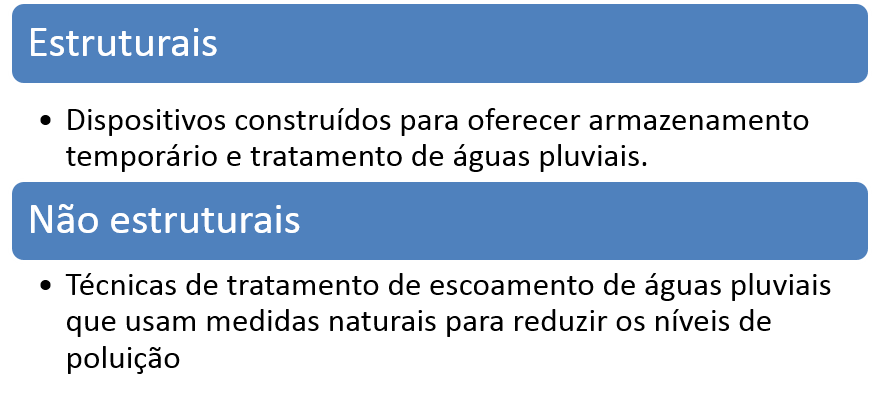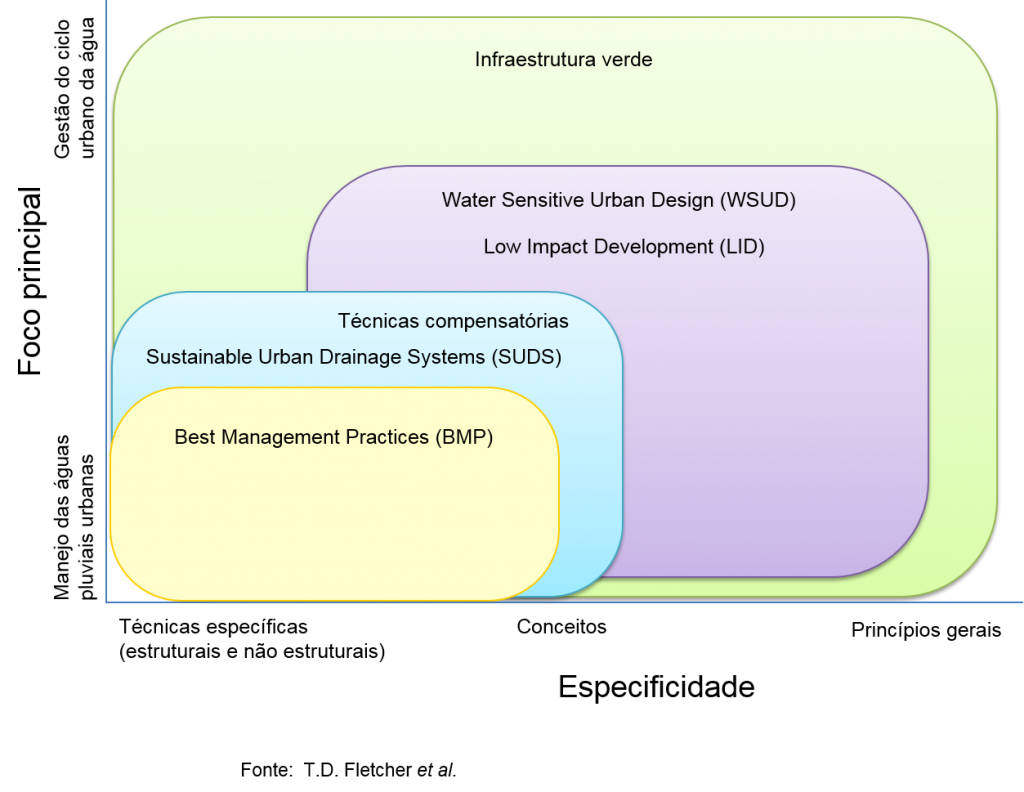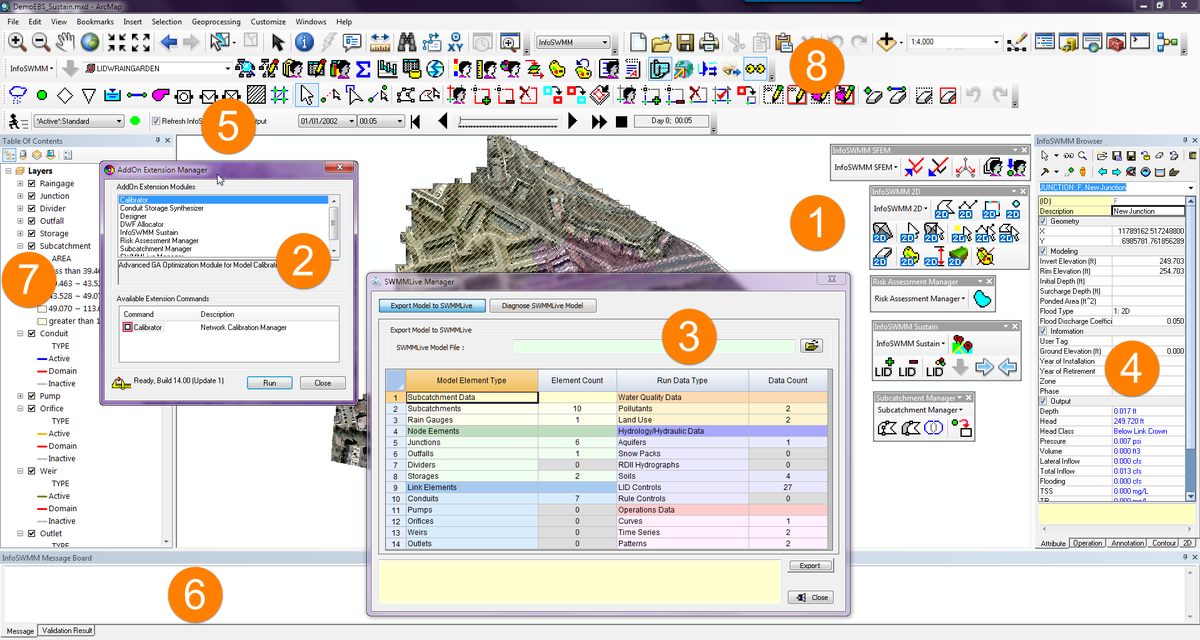InfoSWMM Sustain Generation V2.0 Delivers Significant Advancements for Comprehensive Urban Stormwater Treatment and Analysis
Latest Release Confirms Product’s Role as Industry Leading GIS-Centric Solution for Determining Optimal Green Infrastructure Strategies
Broomfield, Colorado, USA, April 12, 2016
Innovyze, a leading global innovator of business analytics software and technologies for smart wet infrastructure, today announced worldwide availability of the V2.0 Generation of its industry-leading InfoSWMM Sustain for comprehensive urban stormwater treatment and analysis. The new version lets users quickly and reliably determine optimal green infrastructure strategies for reducing volume and peak flows to combined sewer systems as well as evaluating the benefits of distributed green infrastructure implementation on water quantity and quality in urban streams.
InfoSWMM Sustain is a comprehensive geocentric decision support system created to assist stormwater management professionals in developing and implementing plans for flow and pollution control measures to protect source waters and meet water quality goals. The software allows users to locate, develop, evaluate, and select optimal best management practice (BMP), low impact development (LID) and Sustainable Urban Drainage Systems (SUDS) combinations at various watershed scales based on cost and effectiveness. It can accurately model any combination of LID controls, such as porous permeable pavement, rain gardens, green roofs, street planters, rain barrels, infiltration trenches and vegetative swales to determine their effectiveness in managing stormwater and combined sewer overflows. Furthermore, InfoSWMM Sustain will automatically assess the geographic properties in the study area including soil properties, land use, slope, building footprint, groundwater, land ownership, imperviousness and other pertinent factors to determine all possible locations of feasible green infrastructure alternatives. These expanded capabilities can greatly assist users in developing cost-effective and reliable implementation plans for flow and pollution control aimed at protecting source waters and meeting water quality goals. They do so by helping users answer key questions: How effective are BMPs in reducing runoff and pollutant loadings? What are the most cost-effective solutions for meeting water quality and quantity objectives? Where, what type, and how extensive should BMPs be?
By seamlessly integrating ArcGIS 10.x (Esri, Redlands, CA) with SWMM 5.1, InfoSWMM Sustain greatly expands and improves on the USEPA SUSTAIN software to provide critically needed support to watershed practitioners at all levels in developing stormwater management evaluations and cost optimizations to meet their program needs. The software can automatically import any SWMM 5.1, InfoSWMM or InfoWorks ICM (exported to SWMM 5.1) model, then evaluate numerous potential combinations of BMPs and LIDs to determine the optimal combination to meet specified objectives such as runoff volume or pollutant loading reductions. Both kinematic wave and full dynamic wave flow routing models are fully supported. Among its many vital applications, InfoSWMM Sustain can be effectively used in developing TMDL implementation plans, identifying management practices to achieve pollutant reductions under a separate municipal storm sewer system (MS4) stormwater permit, determining optimal green infrastructure strategies for reducing volume and peak flows to combined sewer systems, evaluating the benefits of distributed green infrastructure implementation on water quantity and quality in urban streams, and developing a phased BMP installation plan using cost effectiveness curves.
Among its many major enhancements, Version 2.0 lets users optimize the entire system (using advanced Genetic Algorithms), not only individual subcatchments. Users can also choose a system-wide budget constraint and reduction target for runoff and/or pollution, view LID design and performance directly from the Cost Effectiveness Curve, compare hydrographs for runoff and pollutant of the various solutions on the Cost Effectiveness Curve, implement any desired LID design solution in InfoSWMM, and display the optimal system-wide runoff/pollutant reduction. The new release also introduces an improved, more intuitive user interface that visually highlights and simplifies the workflow process. Users can now quickly evaluate complex decisions about green infrastructure selection and placement performance, costs for meeting flow or water quality targets, or both. The software gives them the power they need to maximize water quality benefits, minimize stormwater management costs and combined sewer overflows, and protect the environment and public health.
“With InfoSWMM Sustain, we are extending our success in the smart network modeling marketplace to address the specific needs of stormwater management professionals and their engineering consultants,” said Paul F. Boulos, Ph.D., BCEEM, Hon.D.WRE, Dist.D.NE, Dist.M.ASCE, NAE, President, COO and Chief Technical Officer of Innovyze. “The new release performs very sophisticated hydrologic and water quality modeling in watersheds and urban streams, and enables users to determine optimal management solutions at multiple-scale watersheds to achieve desired water quality objectives based on cost effectiveness. It also gives users the power tool they need to maximize water quality benefits, minimize stormwater management costs and combined sewer overflows, and protect the environment and public health. This is a must-have for predicting the environmental outcomes of different design and management approaches as well as developing optimal plans for flow and pollution control to protect source waters and meet water quality goals.”
Pricing and Availability
Upgrade to InfoSWMM Sustain V2.0 is now available worldwide by subscription. Subscription members can immediately download the new version free of charge directly from www.innovyze.com. The Innovyze Subscription Program is a friendly customer support and software maintenance program that ensures the longevity and usefulness of Innovyze products. It gives subscribers instant access to new functionality as it is developed, along with automatic software updates and upgrades. For the latest information on the Innovyze Subscription Program, visit www.innovyze.com or contact your local Innovyze Channel Partner.
About InnovyzeInnovyze is a leading global provider of wet infrastructure business analytics software solutions designed to meet the technological needs of water/wastewater utilities, government agencies, and engineering organizations worldwide. Its clients include the majority of the largest UK, Australasian, East Asian and North American cities, foremost utilities on all five continents, and ENR top-rated design firms. With unparalleled expertise and offices in North America, Europe and Asia Pacific, the Innovyze connected portfolio of best-in-class product lines empowers thousands of engineers to competitively plan, manage, design, protect, operate and sustain highly efficient and reliable infrastructure systems, and provides an enduring platform for customer success. For more information, call Innovyze at +1 626-568-6868, or visit www.innovyze.com.
Innovyze Contact:Rajan RayDirector of Marketing and Client Service Manager
Rajan.Ray@innovyze.com
+1 626-568-6868
- See more at: http://www.innovyze.com/news/1672/#sthash.BhyC5GxG.dpufInfoSWMM Sustain is a comprehensive geocentric decision support system created to assist stormwater management professionals in developing and implementing plans for flow and pollution control measures to protect source waters and meet water quality goals. The software allows users to locate, develop, evaluate, and select optimal best management practice (BMP), low impact development (LID) and Sustainable Urban Drainage Systems (SUDS) combinations at various watershed scales based on cost and effectiveness. It can accurately model any combination of LID controls, such as porous permeable pavement, rain gardens, green roofs, street planters, rain barrels, infiltration trenches and vegetative swales to determine their effectiveness in managing stormwater and combined sewer overflows. Furthermore, InfoSWMM Sustain will automatically assess the geographic properties in the study area including soil properties, land use, slope, building footprint, groundwater, land ownership, imperviousness and other pertinent factors to determine all possible locations of feasible green infrastructure alternatives. These expanded capabilities can greatly assist users in developing cost-effective and reliable implementation plans for flow and pollution control aimed at protecting source waters and meeting water quality goals. They do so by helping users answer key questions: How effective are BMPs in reducing runoff and pollutant loadings? What are the most cost-effective solutions for meeting water quality and quantity objectives? Where, what type, and how extensive should BMPs be?
By seamlessly integrating ArcGIS 10.x (Esri, Redlands, CA) with SWMM 5.1, InfoSWMM Sustain greatly expands and improves on the USEPA SUSTAIN software to provide critically needed support to watershed practitioners at all levels in developing stormwater management evaluations and cost optimizations to meet their program needs. The software can automatically import any SWMM 5.1, InfoSWMM or InfoWorks ICM (exported to SWMM 5.1) model, then evaluate numerous potential combinations of BMPs and LIDs to determine the optimal combination to meet specified objectives such as runoff volume or pollutant loading reductions. Both kinematic wave and full dynamic wave flow routing models are fully supported. Among its many vital applications, InfoSWMM Sustain can be effectively used in developing TMDL implementation plans, identifying management practices to achieve pollutant reductions under a separate municipal storm sewer system (MS4) stormwater permit, determining optimal green infrastructure strategies for reducing volume and peak flows to combined sewer systems, evaluating the benefits of distributed green infrastructure implementation on water quantity and quality in urban streams, and developing a phased BMP installation plan using cost effectiveness curves.
Among its many major enhancements, Version 2.0 lets users optimize the entire system (using advanced Genetic Algorithms), not only individual subcatchments. Users can also choose a system-wide budget constraint and reduction target for runoff and/or pollution, view LID design and performance directly from the Cost Effectiveness Curve, compare hydrographs for runoff and pollutant of the various solutions on the Cost Effectiveness Curve, implement any desired LID design solution in InfoSWMM, and display the optimal system-wide runoff/pollutant reduction. The new release also introduces an improved, more intuitive user interface that visually highlights and simplifies the workflow process. Users can now quickly evaluate complex decisions about green infrastructure selection and placement performance, costs for meeting flow or water quality targets, or both. The software gives them the power they need to maximize water quality benefits, minimize stormwater management costs and combined sewer overflows, and protect the environment and public health.
“With InfoSWMM Sustain, we are extending our success in the smart network modeling marketplace to address the specific needs of stormwater management professionals and their engineering consultants,” said Paul F. Boulos, Ph.D., BCEEM, Hon.D.WRE, Dist.D.NE, Dist.M.ASCE, NAE, President, COO and Chief Technical Officer of Innovyze. “The new release performs very sophisticated hydrologic and water quality modeling in watersheds and urban streams, and enables users to determine optimal management solutions at multiple-scale watersheds to achieve desired water quality objectives based on cost effectiveness. It also gives users the power tool they need to maximize water quality benefits, minimize stormwater management costs and combined sewer overflows, and protect the environment and public health. This is a must-have for predicting the environmental outcomes of different design and management approaches as well as developing optimal plans for flow and pollution control to protect source waters and meet water quality goals.”
Pricing and Availability
Upgrade to InfoSWMM Sustain V2.0 is now available worldwide by subscription. Subscription members can immediately download the new version free of charge directly from www.innovyze.com. The Innovyze Subscription Program is a friendly customer support and software maintenance program that ensures the longevity and usefulness of Innovyze products. It gives subscribers instant access to new functionality as it is developed, along with automatic software updates and upgrades. For the latest information on the Innovyze Subscription Program, visit www.innovyze.com or contact your local Innovyze Channel Partner.
About InnovyzeInnovyze is a leading global provider of wet infrastructure business analytics software solutions designed to meet the technological needs of water/wastewater utilities, government agencies, and engineering organizations worldwide. Its clients include the majority of the largest UK, Australasian, East Asian and North American cities, foremost utilities on all five continents, and ENR top-rated design firms. With unparalleled expertise and offices in North America, Europe and Asia Pacific, the Innovyze connected portfolio of best-in-class product lines empowers thousands of engineers to competitively plan, manage, design, protect, operate and sustain highly efficient and reliable infrastructure systems, and provides an enduring platform for customer success. For more information, call Innovyze at +1 626-568-6868, or visit www.innovyze.com.
Innovyze Contact:Rajan RayDirector of Marketing and Client Service Manager
Rajan.Ray@innovyze.com
+1 626-568-6868





 Buscam favorecer a retenção e infiltração das águas precipitadas, visando o rearranjo temporal das vazões e a diminuição do volume escoado, reduzindo a probabilidade de inundações e aumentando a qualidade das águas pluviais. Tem como princípio inicial: manter as mesmas vazões das condições de pré-urbanização, buscando compensar os impactos da urbanização por meio da redução do volume de escoamento superficial, das vazões de pico e consequente redução da vulnerabilidade das áreas urbanas a inundações. O post O
Buscam favorecer a retenção e infiltração das águas precipitadas, visando o rearranjo temporal das vazões e a diminuição do volume escoado, reduzindo a probabilidade de inundações e aumentando a qualidade das águas pluviais. Tem como princípio inicial: manter as mesmas vazões das condições de pré-urbanização, buscando compensar os impactos da urbanização por meio da redução do volume de escoamento superficial, das vazões de pico e consequente redução da vulnerabilidade das áreas urbanas a inundações. O post O



 Robert Dickinson
Robert Dickinson 









